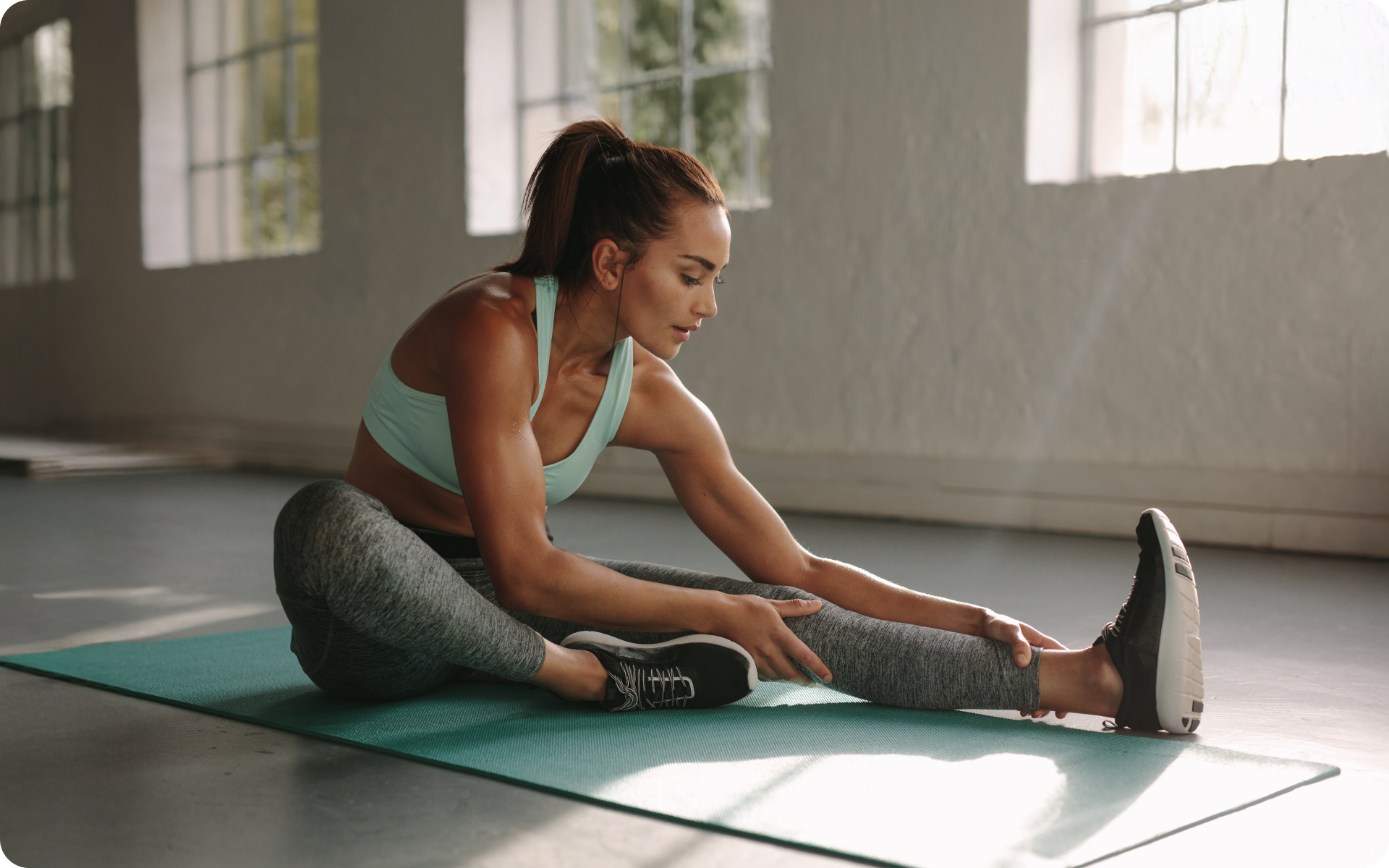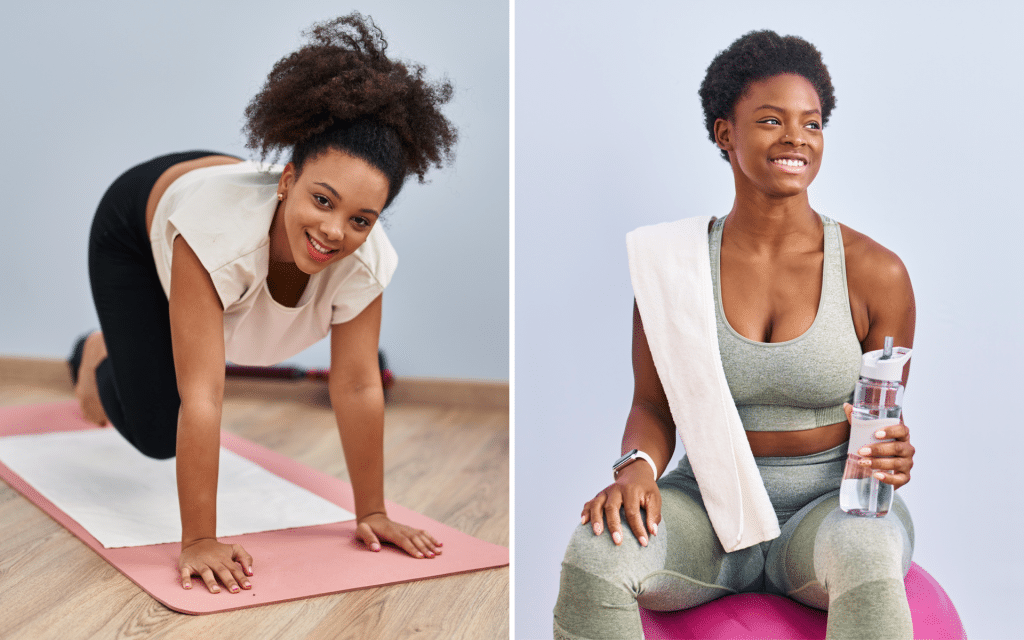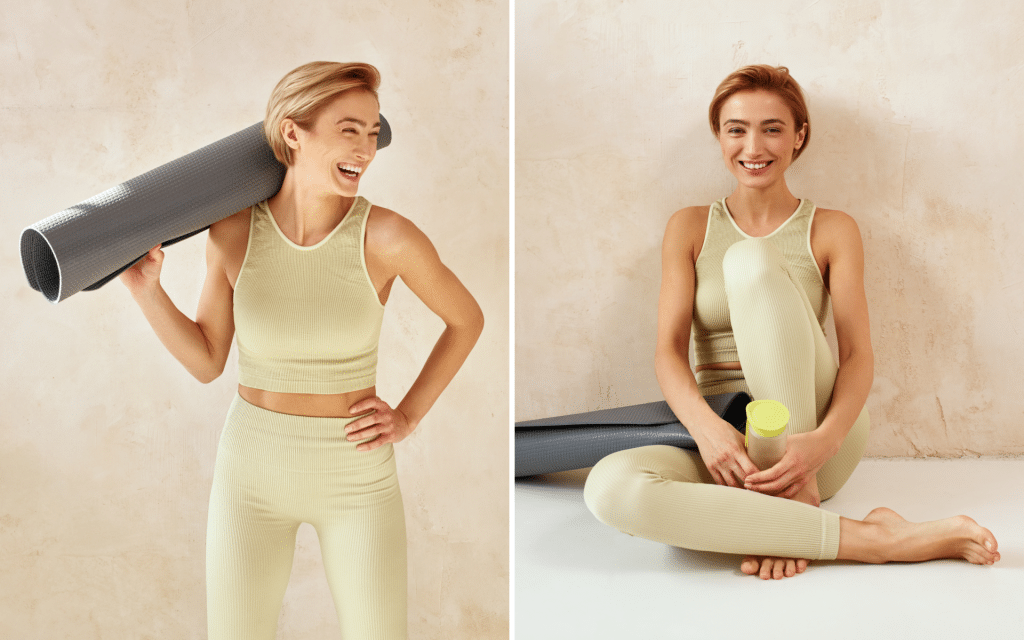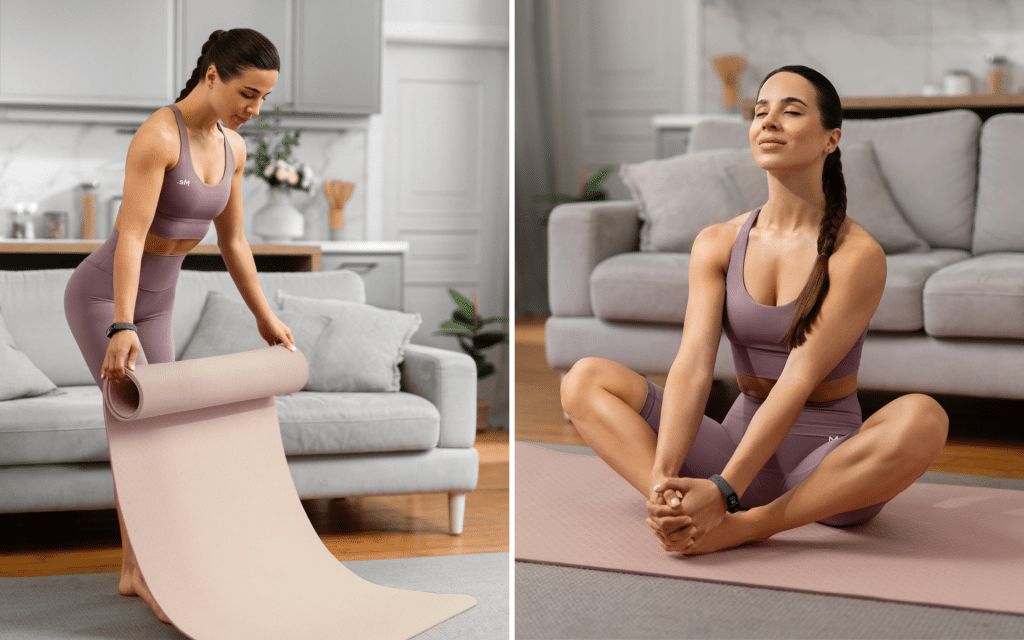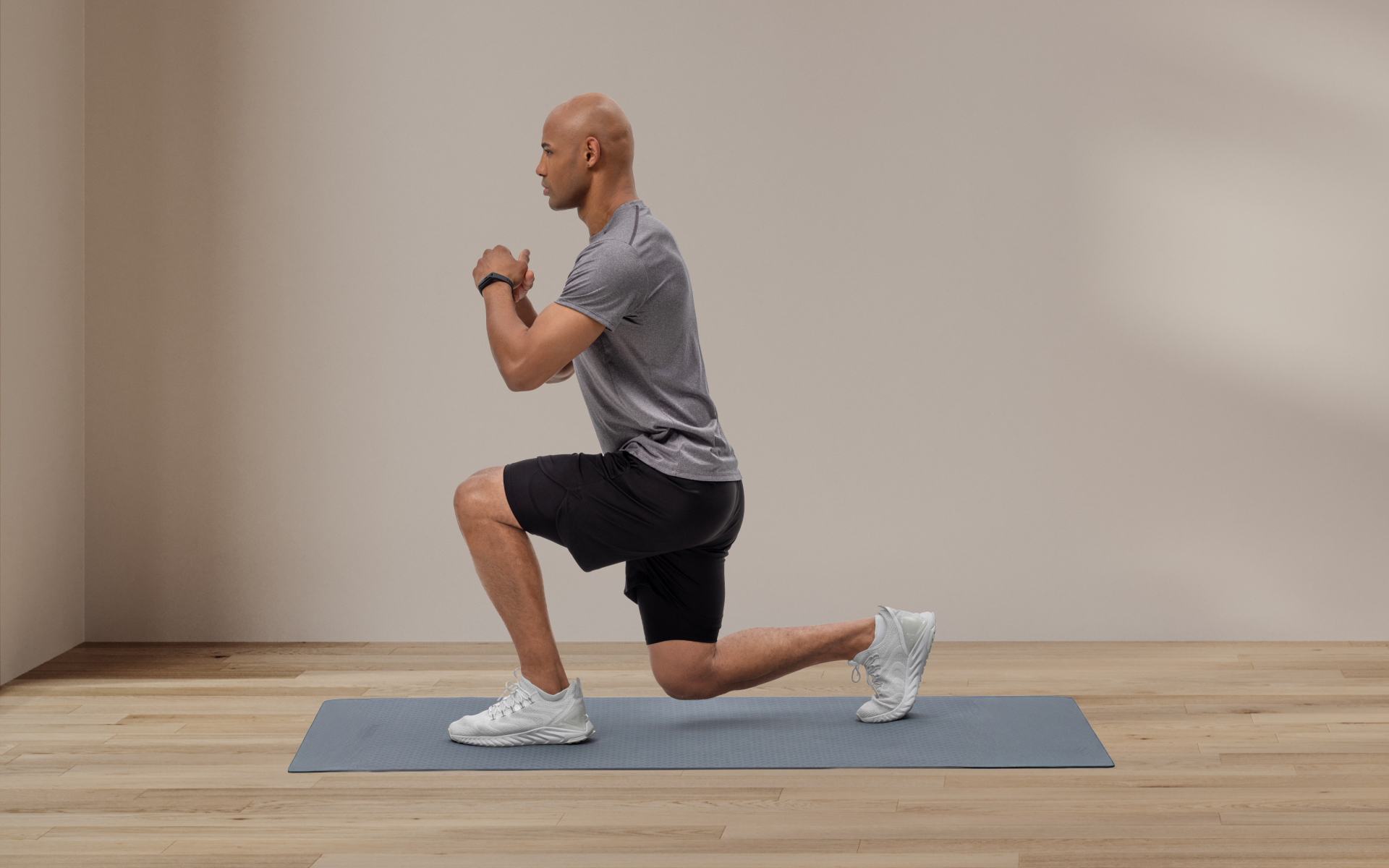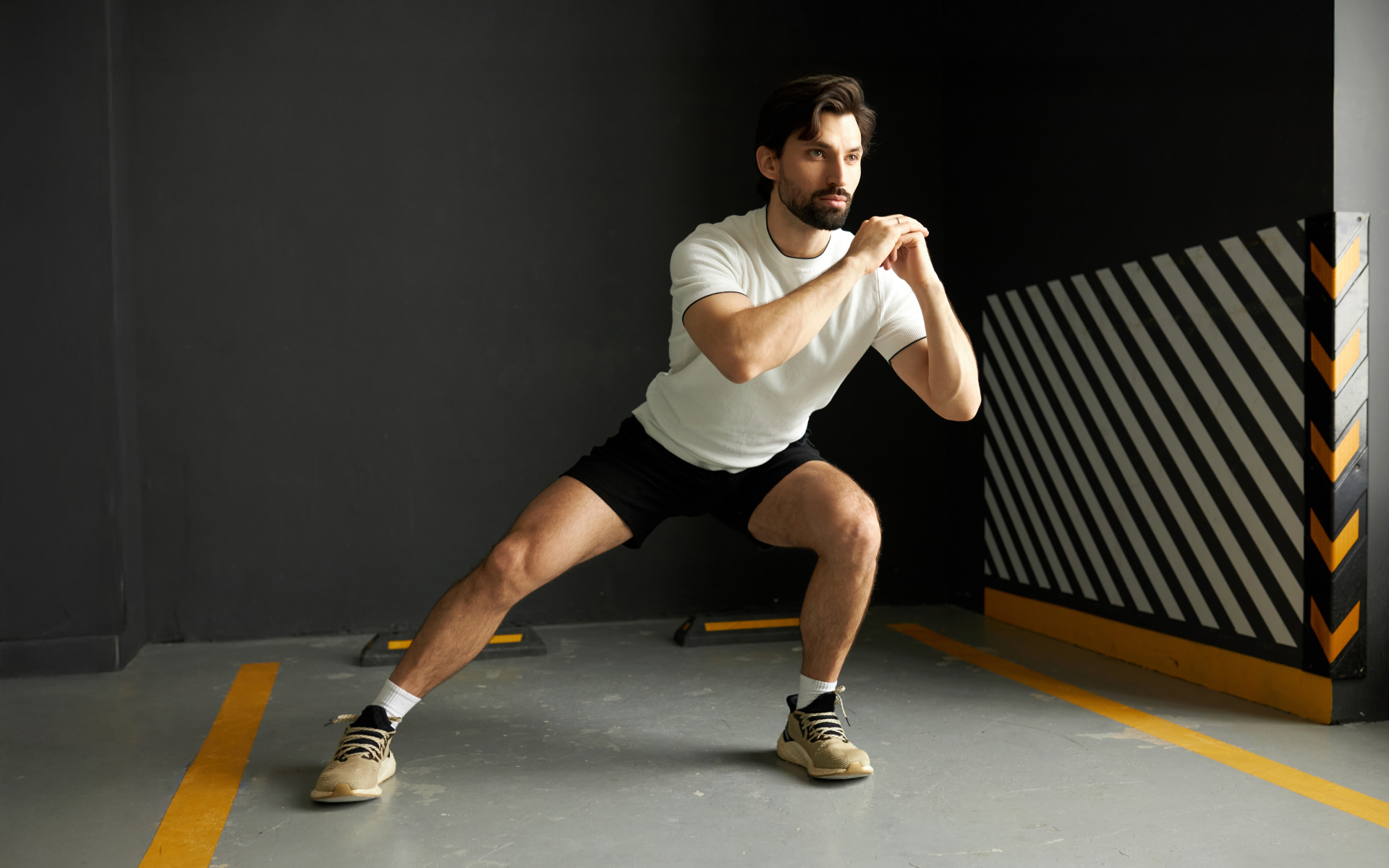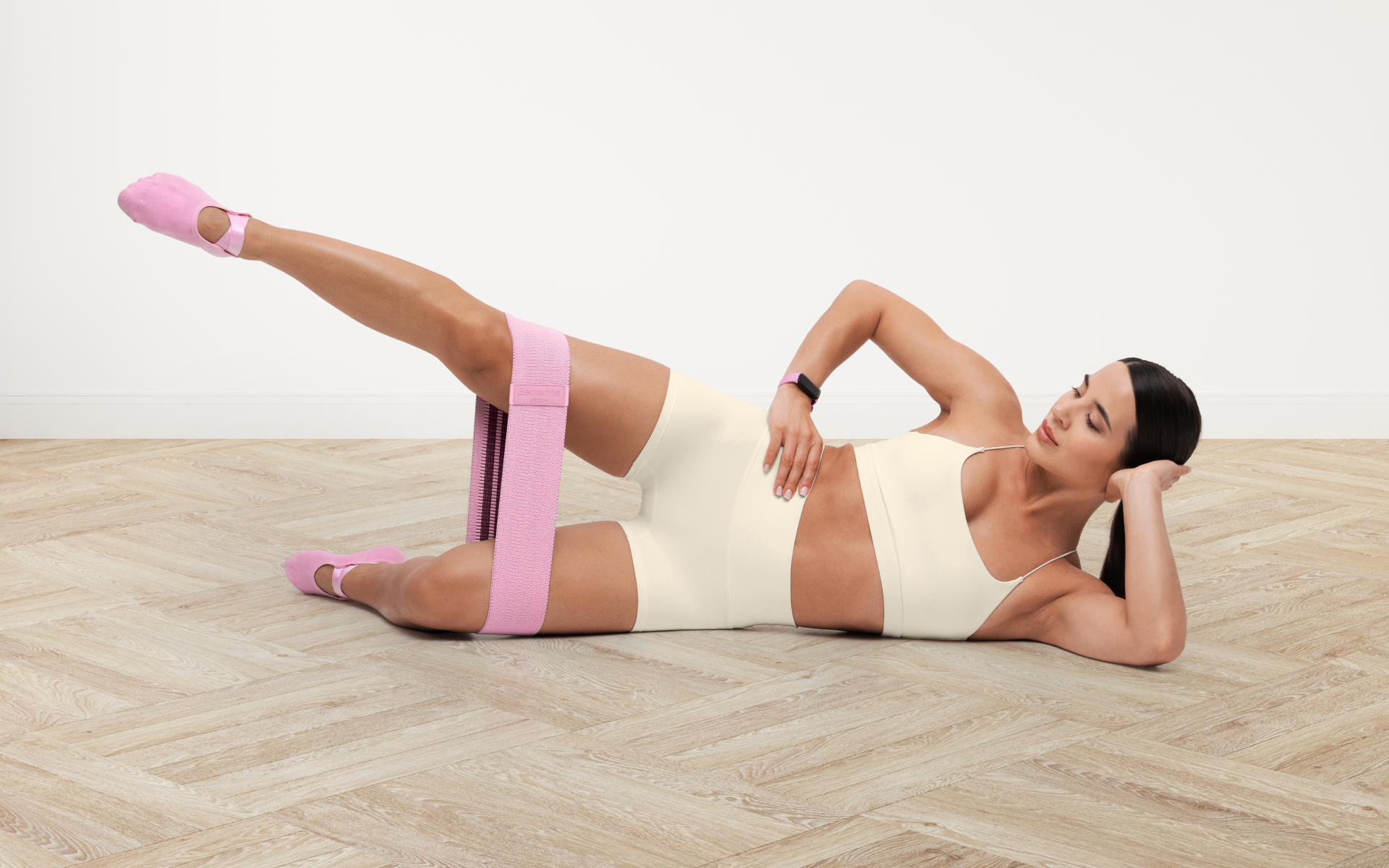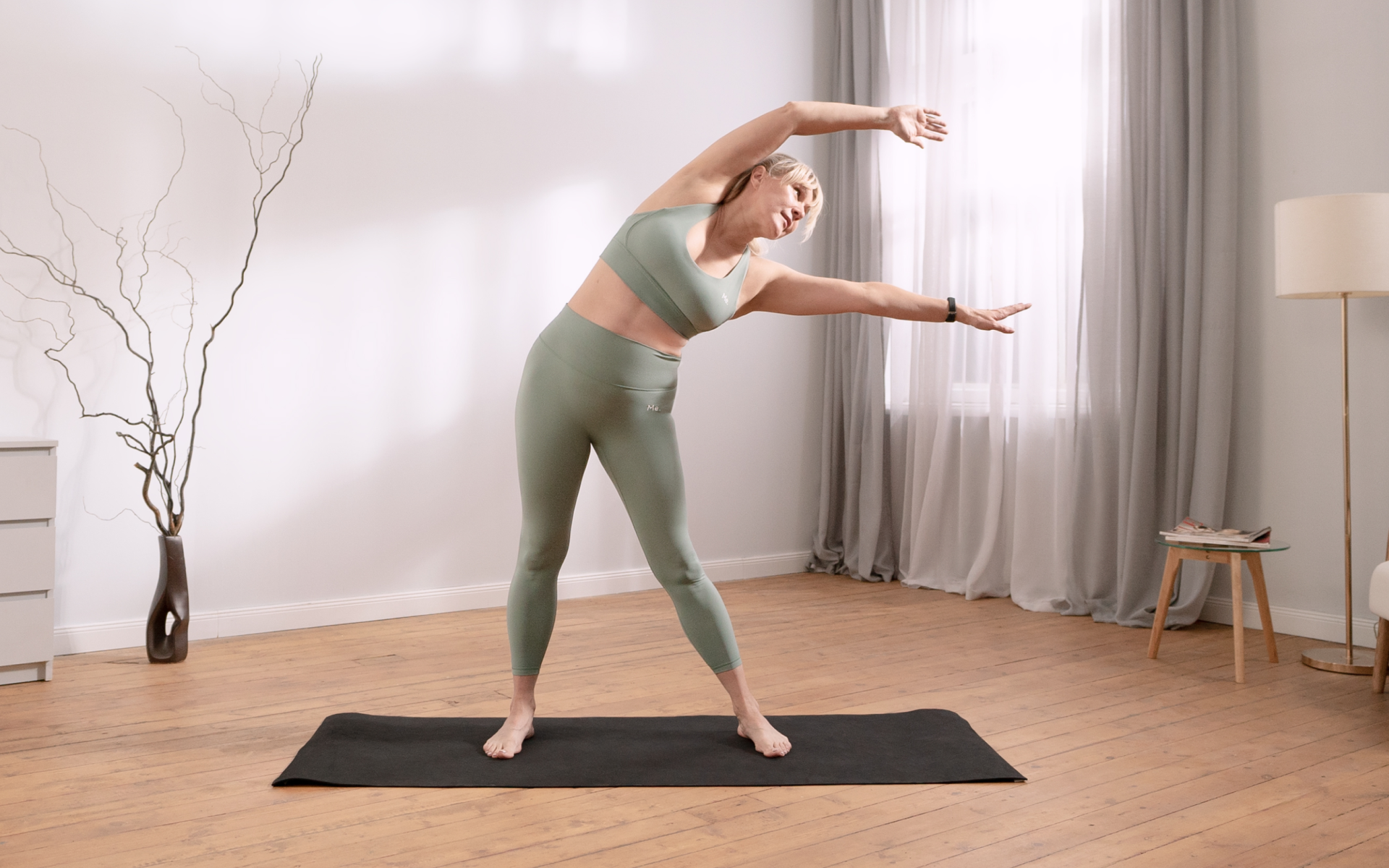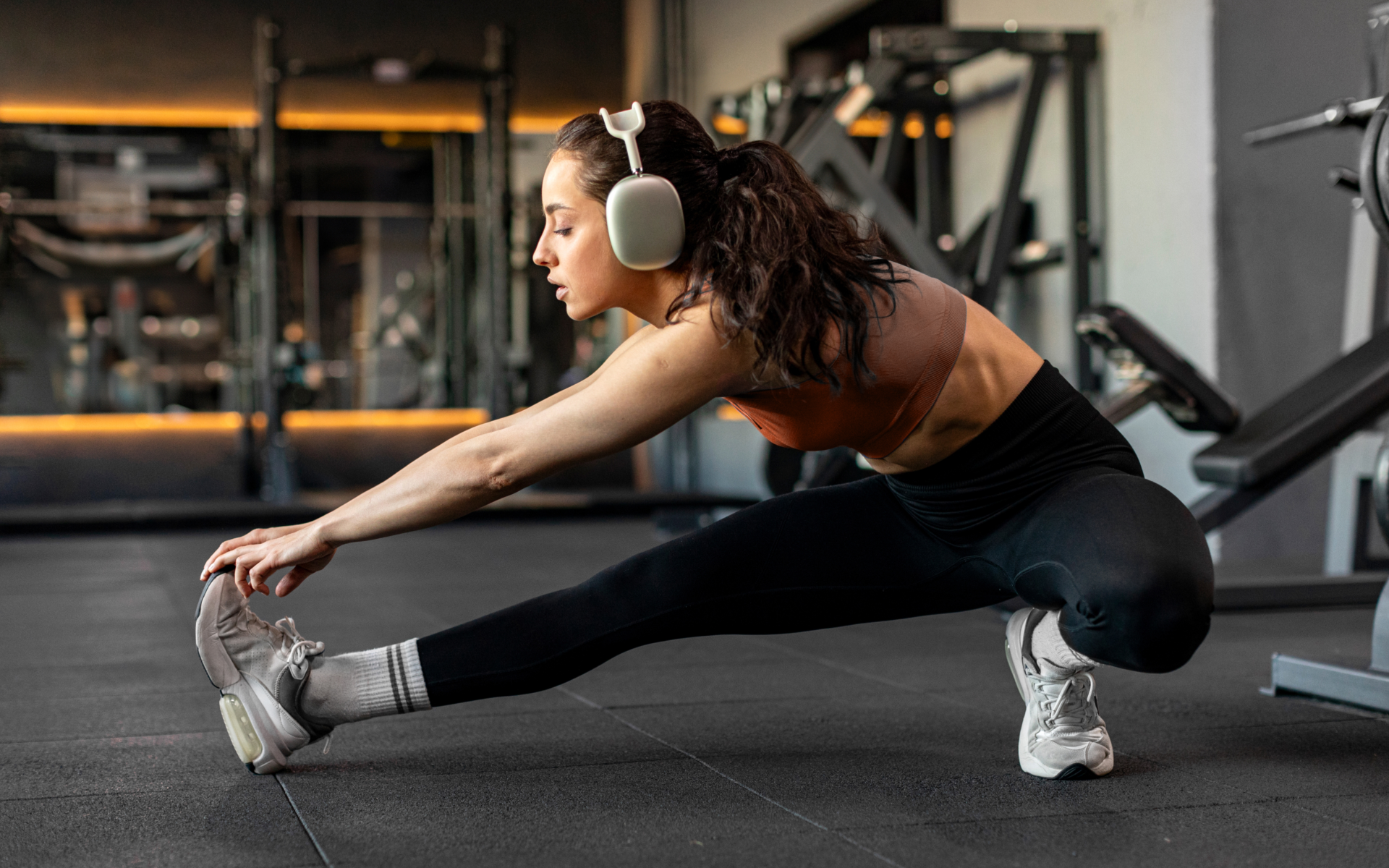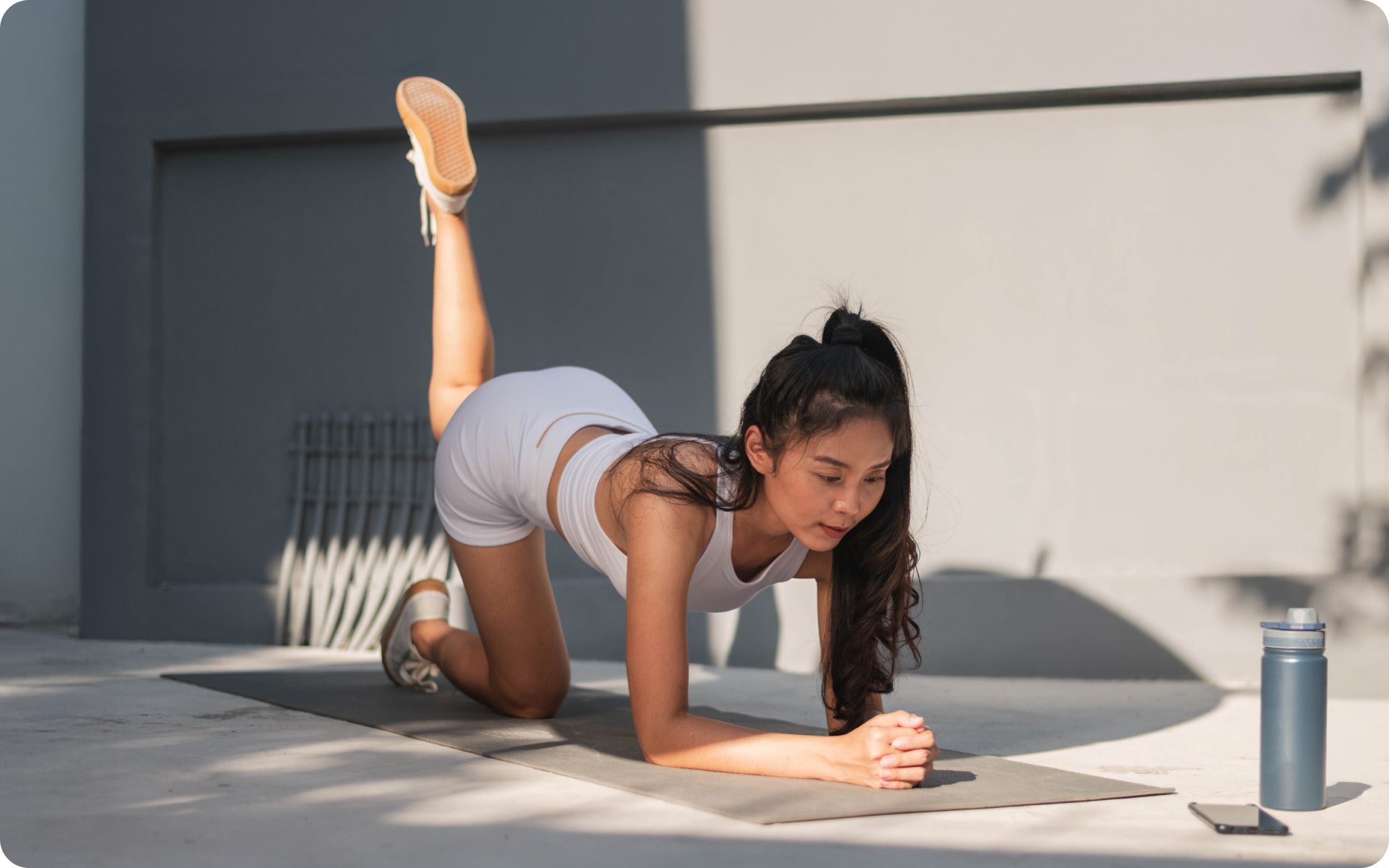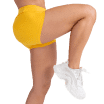Fresh out of leg day training and you’re already feeling tired and stiff? Legs are that part of the body we use all day, every day – there’s just no way around it. That’s why working on lower body flexibility is one of the best things you can do for your legs to feel better.
Leg day stretches after a workout can give you a deeper stretch and prevent muscle soreness. Your muscles are still warmed up, which means better circulation allows you to ease some of that post-workout pain and discomfort.
In this article, we’re going to take a closer look at stretching after physical activity and how focusing on the lower extremities can amplify your fitness routine. Let’s get right to it.
How Should I Warm Up for Leg Day?
To warm up the leg muscles, do a combination of dynamic stretches and light cardio movements. A systematic review found warm-ups to be essential for maximizing fitness performance and optimizing physical activity, regardless of the exercise you want to perform (1).
Dynamic stretching and light cardio can increase body temperature, decrease stiffness, elevate heart rate, and boost mobility (2). Leg day stretches can prepare the muscles and joints for the demands of the workout, potentially reducing the risk of injury to the ligaments, muscles, and tendons (3).
Here are some leg stretching exercises for beginners:
Dynamic Stretches
Dynamic stretches before leg day are controlled movements that warm up the joints. With a 5-10-minute stretch, you can stimulate blood flow without overwhelming the muscles. The examples below can fit into any fitness routine.
- Leg swings: Stand next to a wall and rest your left hand on the wall for balance. Flex the left foot and swing the left leg forward and back. Do 10 reps with the left leg and 10 with the right leg.
- Hip circles: Place your hands on your hips and roll your hips around in a circular motion. Perform 10 reps and switch directions from time to time.
- Walking lunges: Stand tall with your hands on your hips. Step forward with your left leg and allow the opposite knee to lower toward the ground. Return to the starting position and repeat. Perform 10 reps with each leg.
Light Cardio Stretches
Light cardio provides a faster repetitive stretch at a moderate pace. These stretches limit the pressure on your joints, which allows you to tailor the routine to your needs. Here are some stretching examples you can implement.
- Jumping jacks: Stand tall with your arms by your side. Jump out and raise your arms over your head. Jump back in and lower your arms to your side. Repeat 10 times at a steady pace.
- Jog in place: Mimic the running motion while staying in the same place. You bounce up and down while maintaining the same position. Start with a 2-3 minute interval and slowly increase the duration.
- Lateral shuffles: Step your right foot to the right, then bring in your left foot. Take four quick side steps to the right, shuffle, and take four side steps to the left. Repeat 10 times with each leg.
Read more: The Best Quad-Focused Exercises for Home or Gym
Is It Better to Do Dynamic or Static Stretching Before Leg Day?
Without any stretching, there’s little tension and elongation of your muscles and tendons. Muscle elongation (or stretching) often occurs with some external or internal tension, such as when you hold a static stretch or move through a dynamic one.
How you warm up your lower extremities depends on how you maximize leg performance and avoid injuries. Dynamic stretches are better than static stretches before a leg day workout as they more closely mimic weight lifting and prepare your body for more intense exercise. Dynamic leg day stretches move your joints and prepare your body for physical activity.
The BetterMe: Health Coaching app will provide you with a host of fat-frying fitness routines that’ll scare the extra pounds away and turn your body into a masterpiece! Get your life moving in the right direction with BetterMe!
Static stretching can help temporarily improve your range of motion and relax after a workout, a recent systematic review showed. It can be highly beneficial to stretch while your muscles are still warm (4). Stretching before an exercise allows you to achieve a specific range of motion to complete an exercise, such as bending over to pick up a heavy object from the ground.
Leg day stretches use a combination of postures and breathing techniques to improve circulation, decrease muscle tension, ease muscle pain, and reduce the risk of injury. Individual muscle stretching typically aims to increase muscle extensibility and flexibility. Static stretching may slightly decrease muscle strength output in the short term and provide positive physiological changes, such as improved recovery and relaxation (5). To learn more about the pre workout stretches, check out our in-depth article on the topic.
| Dynamic stretches | Static stretches | |
|---|---|---|
| Best for | Before workout | After workout |
| Movement type | Active, controlled movements | Stationary positions, minimal movements |
| Goal | Warm up muscles and joints | Boost flexibility and relaxation |
| Effect on performance | Boost power, agility, and range of motion | Help with muscle recovery and curb tightness |
What Stretches to Do Before Leg Day
Leg day stretches often require dynamic movement patterns, which could boost jumping or running performance. There are two primary forms of dynamic stretching: active and ballistic stretching.
- Active stretching means moving your muscles through their full range of motion with repetitive movements, such as swinging your leg forward and back in a controlled manner.
- Ballistic stretching involves quick, bouncing movements to push your body beyond its limits. It can strain the muscles and requires advanced fitness performance (6).
If your muscles feel tight or less flexible, include basic dynamic stretches to amplify blood flow and warm up the muscles. The stretching routine should progress gradually, giving your joints enough time to adapt.
Make sure the muscle groups are balanced when doing leg day stretches before workouts. If you’re training your quads, train your hamstrings too. Diversify your workout routine so the whole body can benefit from various movements.
Here’s an example of dynamic stretches to try before leg day. It can promote overall stability and engage different muscle groups. You can scale the difficulty down or adjust it to suit your needs whenever you feel pain.
| How to perform | Reps/time | |
|---|---|---|
| Leg swings | Hold onto a wall and swing one leg forward and back. | 10-15 reps with each leg |
| Walking lunges | Step forward into a lunge, switch legs, and repeat. | 10 reps with each leg |
| Hip circles | Draw big circles with the hips while moving the body in a circular motion. | 8-10 reps in each direction |
| Bodyweight squats | Perform slow, controlled squats by practicing sitting and standing positions. | 10-15 reps |
| Butt kicks | Jog in place while kicking your heels toward your glutes. | 30 seconds |
| Toy soldiers | Perform marching steps, kicking straight legs up to touch the opposite hand. | 10 reps with each leg |
| Glute bridges | Lie on your back and lift your hips to activate the glutes. | 10-12 reps |
| Inchworm walkouts | Stretch into a hip-hinge pattern and walk your hands out to a plank position and then back. | 6-8 reps |
How Long Should I Stretch Before a Leg Day?
It depends on your current fitness performance. If you’re just starting with workouts, you can spend 5 to 10 minutes, or longer if you’re inexperienced, on leg day stretches at home so your body is better prepared. This can help activate the muscles, loosen the joints, and prevent injuries.
However, if you’ve already built up a solid routine, you can spend 10 to 15 minutes, or more, on dynamic stretches to mobilize your muscles for heavy exercise sessions. Dynamic stretches should be a top priority before you work on your legs, while static movements can be left after leg day so that the body can cool down properly.
If you want proper guidance, the BetterMe app can help you perform stretches correctly and safely. It provides a guided stretching regimen that best fits your goals to loosen up the muscles and decrease possible injuries. The app shows you a bunch of new stretches, so your exercise never feels boring.
BetterMe will keep you laser-focused on your weight loss journey! Nutrient-packed meal plans, fat-blasting workouts, galvanizing challenges and much more. Try using the app and see for yourself!
Does Stretching Help Sore Muscles After Leg Day?
Many people stretch their bodies before or after athletic activity to curb sore and stiff muscles, avoid injury, and stimulate performance output. While stretching after a leg day can alleviate muscle soreness, its effect may be limited.
Here’s what research has to say:
- A review of 14 studies found that pre- and post-exercise stretch patterns helped reduce sore muscles. The former decreased soreness one day after physical activity, while the latter curbed peak soreness over one week. Although the effects were statistically significant, they were minimal (7).
- A 2024 preliminary report found that while stretching may affect muscle strength and fatigue, it doesn’t appear to influence muscle tension. Therefore, people should incorporate various types of stretching into their daily schedules to mitigate the risk of potential injuries (8).
Read More: Active Stretching Exercises: What Are They And How Can They Benefit You?
What Stretches Should I Do After a Leg Day?
Are you wondering how to stretch your legs fully? You can do 5 minutes of static stretches to relax the muscles and stabilize your breathing patterns. They’re best to try when your muscles are still warm. Here’s a routine to perform. Dive deeper into leg stretches after workout with our dedicated article.
| How to perform | Reps/time | |
|---|---|---|
| Quad stretch | Stand tall and reach to grab your ankle. Pull your heel toward your buttocks and hold. | 30 seconds per leg |
| Seated hamstring stretch | Sit down and extend one leg. Reach for your ankle and hold. | 30 seconds per leg |
| Figure-four stretch | Lie on your back, cross one ankle over the opposite knee, and hold. | 30 seconds per leg |
| Butterfly stretch | Sit down and let your soles touch. Spread your knees wide open and hold. | 40 seconds |
| Calf stretch | Lean forward and extend one leg back. Feel the stretch and hold. | 30 seconds per leg |
Is It Okay to Do Leg Stretches Every Day?
Absolutely. Consistent, light, and slow stretching is good for the body. Inexperienced practitioners can practice longer stretching routines to adequately prepare their bodies. Stretching stimulates the tissues and can increase blood flow, which is excellent for oxygen supply. Light stretch patterns can boost blood circulation, allowing for better nutrient delivery (7). However, you should still listen to your body.
If your muscles are feeling too sore, exhausted, and drained, you should give them time to recover before stretching them again. This can be the case for beginner fitness enthusiasts who need time to build their performance, flexibility, and stamina.
However, if you do light stretching for 5 to 10 minutes and your muscles aren’t extremely sore, then doing leg stretches every day is okay. Overall, whether or not you choose to stretch daily depends on your current performance and fitness goals.
The golden rule is to never push yourself beyond your pain threshold. Stretching patterns should be controlled and gentle, not a cause for discomfort or pain. They allow the muscle fibers to adapt and relax, therefore offering optimal results with long-term gain. Yes, 5, 10, and even 20 minutes of a good stretch can do wonders for your body. You can experience amplified circulation, better flexibility, and steady breathing patterns. Each stretch can target various muscle groups and benefit the joints. How long you stretch depends on personal preference. There’s no need to stretch 3 times a day when you can do it once or twice. The goal isn’t to push yourself beyond your limits. Instead, you should listen to your body and practice a stretching routine that helps your joints. Static stretching isn’t bad, it’s just not recommended before a workout, mainly because it’s slow and doesn’t increase your body temperature in the same way as dynamic warm-ups. You need your nervous system to be ready and your heart rate to increase to prepare your muscles for action.Frequently Asked Questions
What is the golden rule for stretching?
Is 20 minutes of stretching a day enough?
Can I stretch 3 times a day?
Why is static stretching not recommended?
” mp4=”https://cdn.betterme.world/articles/wp-content/uploads/2025/05/PilatesOlesia1.mp4″]
The Bottom Line
If you feel you’ve tried everything but your muscles feel tight and tired after a workout, then you may need to revamp your stretching routine. Stretching is a key component of any fitness routine. Improving the general fluidity of motion and limberness in the lower body is the most beneficial thing you can do to keep your legs in shape.
If you don’t stretch or warm up adequately, your muscles can become tight and cause pain. Some good stretches can go a long way to enhancing flexibility and easing discomfort, aches, and tightness.
DISCLAIMER:
This article is intended for general informational purposes only and does not serve to address individual circumstances. It is not a substitute for professional advice or help and should not be relied on for making any kind of decision-making. Any action taken as a direct or indirect result of the information in this article is entirely at your own risk and is your sole responsibility.
BetterMe, its content staff, and its medical advisors accept no responsibility for inaccuracies, errors, misstatements, inconsistencies, or omissions and specifically disclaim any liability, loss or risk, personal, professional or otherwise, which may be incurred as a consequence, directly or indirectly, of the use and/or application of any content.
You should always seek the advice of your physician or other qualified health provider with any questions you may have regarding a medical condition or your specific situation. Never disregard professional medical advice or delay seeking it because of BetterMe content. If you suspect or think you may have a medical emergency, call your doctor.
SOURCES:
- The effect of warm-up in resistance training and strength performance: a systematic review (2021, scielo.pt)
- The Role of Specific Warm-up during Bench Press and Squat Exercises: A Novel Approach (2020, nih.gov)
- Potential Effects of Dynamic Stretching on Injury Incidence of Athletes: A Narrative Review of Risk Factors (2023, nih.gov)
- The Effectiveness of Post-exercise Stretching in Short-Term and Delayed Recovery of Strength, Range of Motion and Delayed Onset Muscle Soreness: A Systematic Review and Meta-Analysis of Randomized Controlled Trials (2021, frontiersin.org)
- Effects of Active Individual Muscle Stretching on Muscle Function (2014, nih.gov)
- Current Concepts in Muscle Stretching for Exercise and Rehabilitation (2012, nih.gov)
- Stretching to prevent or reduce muscle soreness after exercise (2011, nih.gov)
- The Effects of Proprioceptive Neuromuscular Facilitation Stretching on Post-Exercise Delayed Onset Muscle Soreness in Young Adults (2014, nih.gov)
